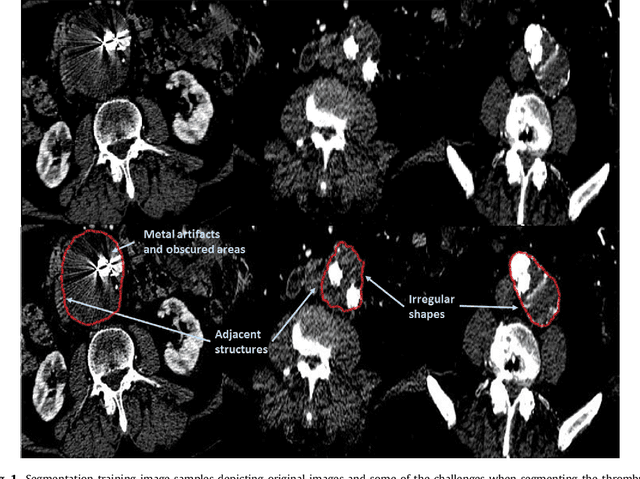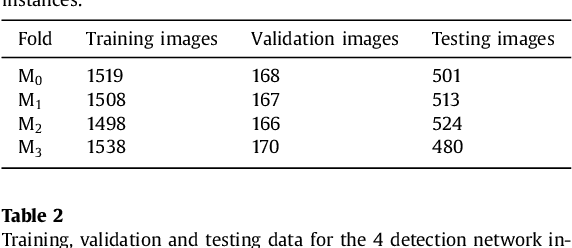Ainhoa García-Familiar
3D convolutional neural network for abdominal aortic aneurysm segmentation
Mar 03, 2019



Abstract:An abdominal aortic aneurysm (AAA) is a focal dilation of the aorta that, if not treated, tends to grow and may rupture. A significant unmet need in the assessment of AAA disease, for the diagnosis, prognosis and follow-up, is the determination of rupture risk, which is currently based on the manual measurement of the aneurysm diameter in a selected Computed Tomography Angiography (CTA) scan. However, there is a lack of standardization determining the degree and rate of disease progression, due to the lack of robust, automated aneurysm segmentation tools that allow quantitatively analyzing the AAA. In this work, we aim at proposing the first 3D convolutional neural network for the segmentation of aneurysms both from preoperative and postoperative CTA scans. We extensively validate its performance in terms of diameter measurements, to test its applicability in the clinical practice, as well as regarding the relative volume difference, and Dice and Jaccard scores. The proposed method yields a mean diameter measurement error of 3.3 mm, a relative volume difference of 8.58 %, and Dice and Jaccard scores of 87 % and 77 %, respectively. At a clinical level, an aneurysm enlargement of 10 mm is considered relevant, thus, our method is suitable to automatically determine the AAA diameter and opens up the opportunity for more complex aneurysm analysis.
Fully automatic detection and segmentation of abdominal aortic thrombus in post-operative CTA images using deep convolutional neural networks
Apr 01, 2018



Abstract:Computerized Tomography Angiography (CTA) based follow-up of Abdominal Aortic Aneurysms (AAA) treated with Endovascular Aneurysm Repair (EVAR) is essential to evaluate the progress of the patient and detect complications. In this context, accurate quantification of post-operative thrombus volume is required. However, a proper evaluation is hindered by the lack of automatic, robust and reproducible thrombus segmentation algorithms. We propose a new fully automatic approach based on Deep Convolutional Neural Networks (DCNN) for robust and reproducible thrombus region of interest detection and subsequent fine thrombus segmentation. The DetecNet detection network is adapted to perform region of interest extraction from a complete CTA and a new segmentation network architecture, based on Fully Convolutional Networks and a Holistically-Nested Edge Detection Network, is presented. These networks are trained, validated and tested in 13 post-operative CTA volumes of different patients using a 4-fold cross-validation approach to provide more robustness to the results. Our pipeline achieves a Dice score of more than 82% for post-operative thrombus segmentation and provides a mean relative volume difference between ground truth and automatic segmentation that lays within the experienced human observer variance without the need of human intervention in most common cases.
 Add to Chrome
Add to Chrome Add to Firefox
Add to Firefox Add to Edge
Add to Edge